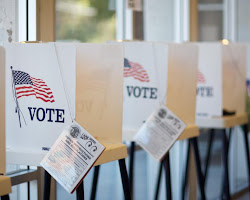Introduction
The emancipation of the mind is a more difficult feat than emancipating the body. This is because the mind is often more imprisoned by our thoughts, beliefs, and conditioning than our physical bodies. When we are enslaved by our minds, we are limited in our ability to think for ourselves, make our own choices, and live our lives to the fullest.
Body
There are many reasons why the emancipation of the mind is a difficult feat. First, our minds are constantly bombarded with messages from the outside world. These messages can come from our families, our friends, our culture, and the media. They can tell us who we are, what we should believe, and how we should live our lives. If we are not careful, we can become trapped in these messages and lose our own sense of identity and freedom.
Second, our minds are often filled with negative thoughts and beliefs. These thoughts can tell us that we are not good enough, that we cannot achieve our goals, or that we are not worthy of happiness. If we believe these thoughts, they can become a self-fulfilling prophecy. They can prevent us from taking risks, trying new things, or living our lives to the fullest.
Third, our minds are often conditioned by our past experiences. These experiences can shape our beliefs, our perceptions, and our reactions to the world around us. If we are not aware of our conditioning, it can keep us stuck in old patterns of thinking and behavior.
Remedies
There are a number of things that we can do to challenge the imprisonment of our minds and achieve emancipation. First, we need to become aware of the messages that we are receiving from the outside world. We need to question these messages and decide for ourselves whether or not they are true.
Second, we need to challenge our negative thoughts and beliefs. We need to replace them with more positive and empowering thoughts. We can do this by practicing mindfulness, meditation, and positive self-talk.
Third, we need to become aware of our conditioning and how it is affecting our lives. We need to learn to let go of the past and embrace the present moment. We can do this by practicing forgiveness, acceptance, and gratitude.
Conclusion
The emancipation of the mind is a journey, not a destination. It is a process of learning, growing, and transforming. It is a process of becoming the author of our own lives. It is a process of freedom.
Call to action
If you are ready to start your journey to the emancipation of your mind, there are many resources available to help you. There are books, articles, websites, and workshops that can teach you how to challenge your thoughts, beliefs, and conditioning. There are also many communities of people who are on the same journey as you.
Summary
My responses are generated based on a mixture of licensed data, data created by human trainers, and publicly available data. However, I can provide an analysis and summary based on the general theme suggested by the title "The Emancipation of the Mind: A More Difficult Feat Than Emancipating the Body".
Title: "The Emancipation of the Mind: A More Difficult Feat Than Emancipating the Body" likely delves into the complex process of mental liberation compared to physical liberation.
In historical and sociopolitical contexts, the word "emancipation" often refers to the abolition of slavery, which is a form of physical liberation. However, the liberation of the mind – the release from mental constraints such as prejudice, stereotypes, and ingrained beliefs – can be a far more challenging endeavor.
The Emancipation Proclamation of 1863 by President Abraham Lincoln, for instance, legally freed millions of slaves in Confederate-held territories. This act symbolized physical emancipation. However, the mental and psychological chains of slavery – the deeply rooted beliefs of racial inferiority and superiority – were not as easily eradicated.
The title suggests that the article or book explores the concept of mental emancipation, perhaps through the lens of post-slavery societies, the civil rights movement, and ongoing racial and social justice initiatives. It likely examines the challenges and complexities of changing societal attitudes, beliefs, and prejudices, which often prove to be more resistant to change than laws and regulations.
The process of mental emancipation involves self-awareness, critical thinking, education, and the willingness to challenge and change one's beliefs. It's a continuous, often difficult process that requires both individual and collective effort.
In conclusion, "The Emancipation of the Mind: A More Difficult Feat Than Emancipating the Body" likely provides a thoughtful exploration of the process and challenges of mental liberation, particularly in the context of racial and social justice. It underscores the importance of mental emancipation in achieving true freedom and equality, beyond the bounds of physical liberation.
The emancipation of the mind is a difficult feat, but it is possible. It is a journey that is worth taking.











